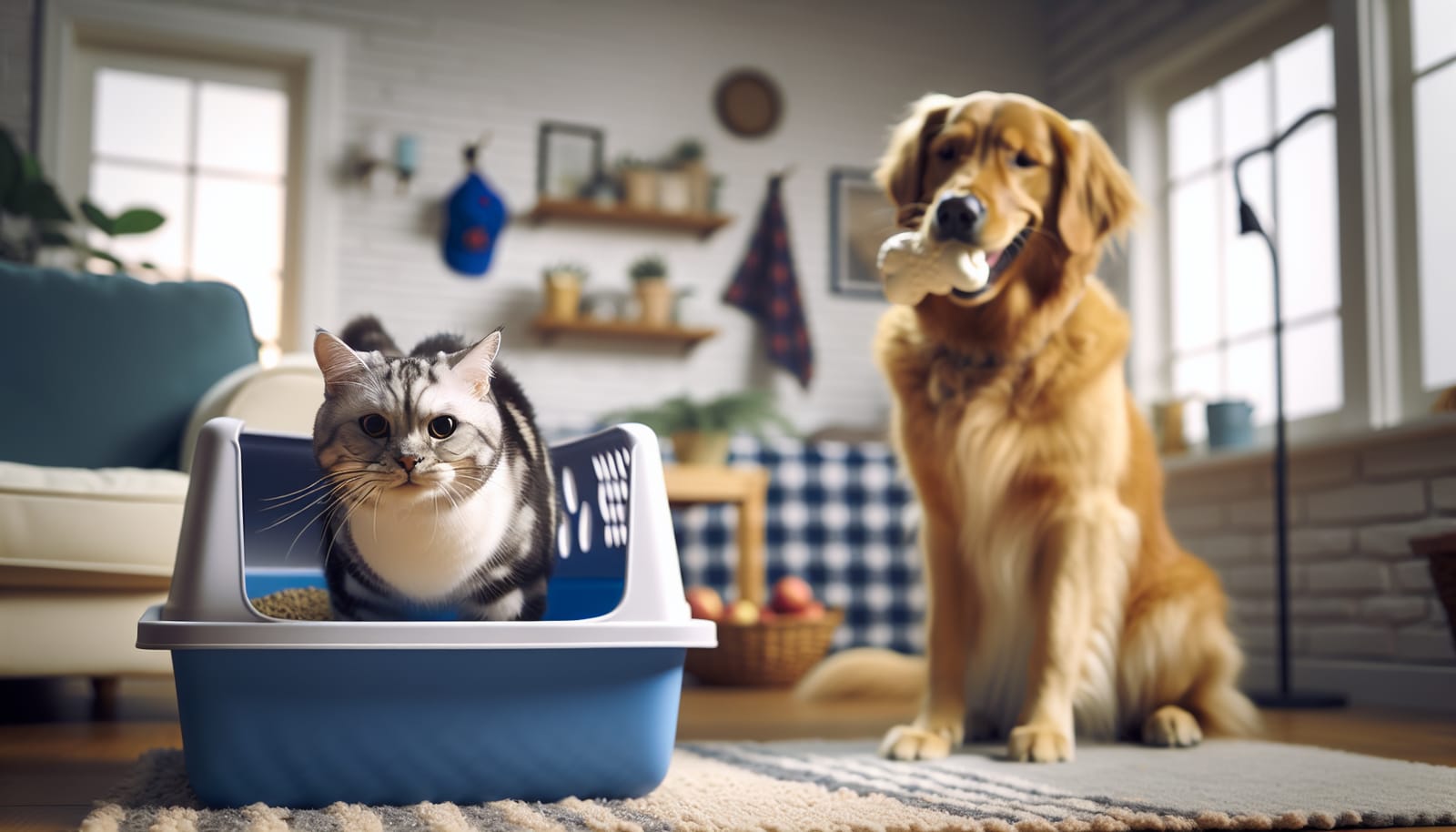As pet lovers, we cherish the companionship of our furry friends, but let’s face it: not everything about pet ownership is a walk in the park. One of the most common, yet often frustrating, challenges cat owners face is litter box issues. Whether it’s inappropriate elimination or a sudden refusal to use the box, these problems can be perplexing. But don’t fret! With a little understanding and some proactive measures, you can solve these issues and ensure a happy, healthy environment for your cat.
Understanding Your Cat’s Behavior
Cats are creatures of habit, and their litter box habits are no exception. When a cat suddenly begins to avoid the litter box, it’s crucial to understand that this behavior is often a form of communication. Cats may be trying to tell us something isn’t right, whether it’s a physical discomfort or a change in their environment.
Physical Health Concerns
One of the first things to consider when faced with litter box issues is your cat's health. Conditions such as urinary tract infections (UTIs), bladder stones, or even more serious health concerns can lead to avoidance of the litter box. If your cat is straining to urinate, showing signs of discomfort, or exhibiting any unusual behavior, it’s essential to consult your veterinarian as soon as possible.
Behavioral Triggers
Behavioral changes can also stem from stress or anxiety. Cats are sensitive to their surroundings, and changes such as moving to a new home, the arrival of a new pet, or even changes in your routine can disrupt their sense of security. Observe your cat's behavior; if you notice signs of stress, consider creating a more stable environment, perhaps by providing a quiet space where they can retreat.
The Right Litter Box Setup
The setup and maintenance of the litter box are crucial in encouraging its use. Here are some considerations to keep in mind:
Size and Accessibility
Make sure the litter box is the right size for your cat. A small box can make your cat feel cramped and uncomfortable, while a box that’s too large may be intimidating. Additionally, consider your cat’s age and mobility; senior cats or those with health issues may need a box with lower sides for easier access.
Litter Type
Cats have preferences, and the type of litter you use can significantly impact their willingness to use the box. Some cats prefer clumping litter, while others might favor non-clumping or crystal-based options. It can be helpful to experiment with different types to see what your cat prefers.
Cleanliness
Cats are naturally clean animals and will avoid a dirty litter box. Ensure you scoop the box daily and change the litter regularly. A thorough cleaning with soap and water should be done at least once a month. If your cat is still refusing to use the box despite cleanliness, consider whether the box itself is too old or damaged.
Location, Location, Location
The placement of the litter box is just as important as its setup. Cats prefer quiet, private areas for their litter boxes. Avoid placing the box near their food and water bowls or in high-traffic areas. If your home has multiple levels, consider placing a litter box on each floor for easy access.
Environmental Changes
If you’ve recently made changes to your home, like rearranging furniture or bringing in new décor, your cat may feel unsettled. Try to observe if they have a preferred location for the box and keep it consistent. If a new addition to the household is causing anxiety, consider giving your cat extra attention and providing safe spaces to retreat to.
Addressing Territorial Issues
If you have multiple cats, territorial disputes can lead to litter box avoidance. Cats are territorial by nature, and one may feel threatened by another. It’s essential to ensure that each cat feels secure in their environment. This might mean providing separate litter boxes and feeding areas or using pheromone diffusers to reduce tension.
Introducing New Pets
When introducing a new cat or pet into your home, do so gradually. Allow them to get accustomed to each other’s scents before any direct interaction. This can help minimize any territorial disputes and ease the transition for your existing pets.
The Importance of Positive Reinforcement
If your cat is struggling with litter box issues, it’s essential to remain patient and avoid punishment. Instead, focus on positive reinforcement. Reward your cat with treats or affection when they use the litter box correctly. This encourages them to associate the box with positive experiences.
Create a Routine
Establishing a routine can also help your cat feel more secure. Try to keep feeding, playtime, and litter box cleaning on a consistent schedule. Cats thrive on routine, and knowing what to expect can reduce anxiety.
Conclusion: A Happy Litter Box Equals a Happy Cat
Litter box issues can be a source of stress for both cats and their owners, but understanding the underlying causes is the first step toward resolution. With proper attention to your cat’s health, the right litter box setup, and a stress-free environment, you can encourage your feline friend to use their box consistently.
Remember, cats are not only pets; they are family. By being observant and responsive to their needs, you can strengthen your bond and create a happier, healthier home for both you and your beloved cat. When litter box issues arise, take a breath and remember that patience, understanding, and love can work wonders. Happy litter box training!

